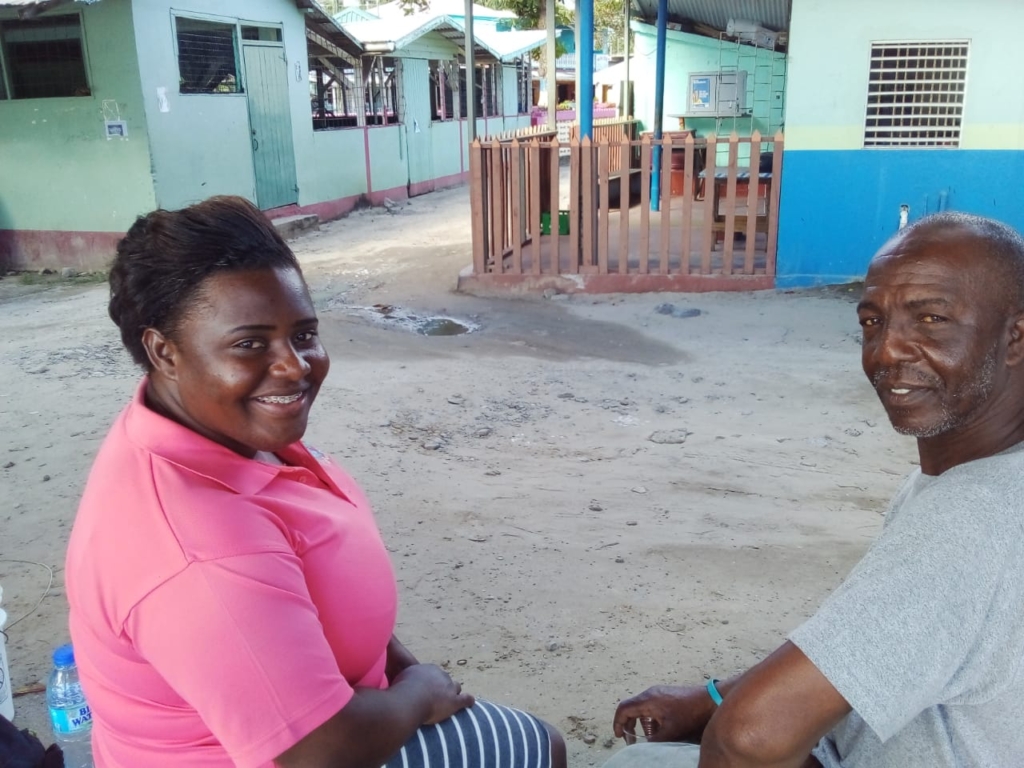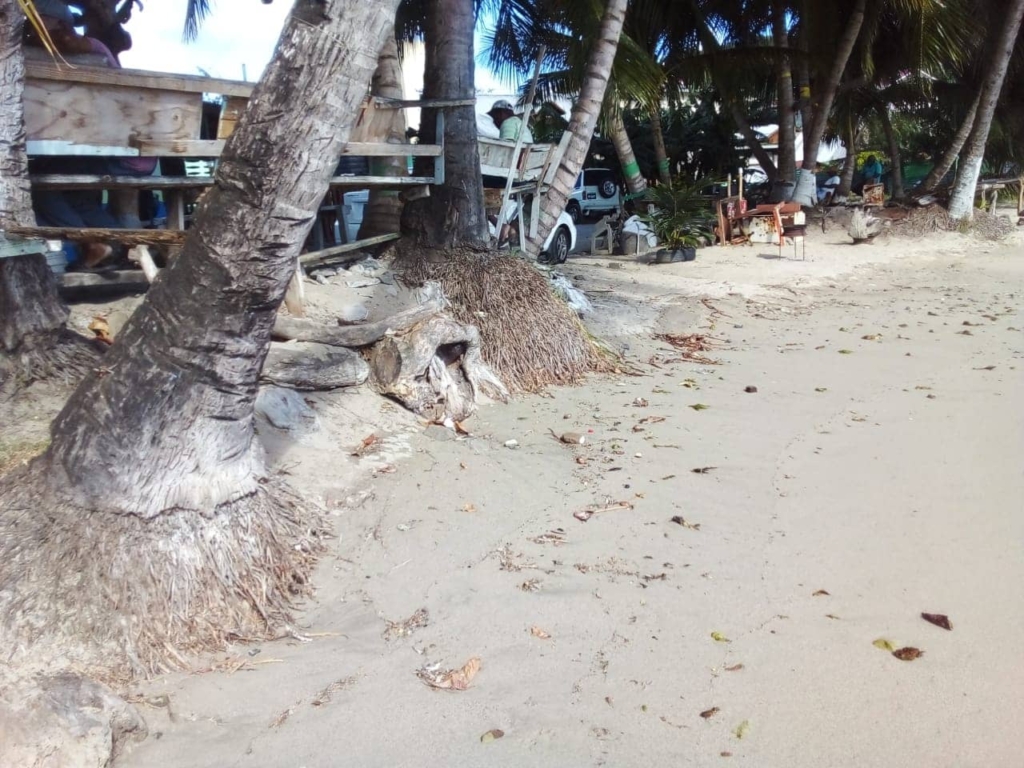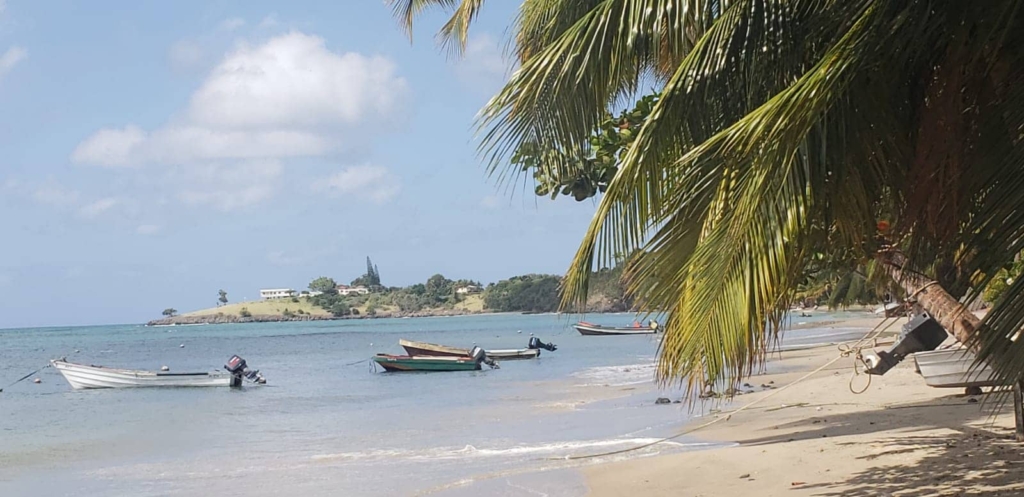In Laborie, Saint Lucia, fishers adopt new practices to remain viable in the face of climate change. This is the eighth of the “Voices from the Frontline (Phase III)” stories by GRP and ICCCAD supported by Irish Aid.
On the southern coast of the Eastern Caribbean Island of Saint Lucia, lies the village of Laborie with an estimated population of 6,700 inhabitants. Known for its cultural and historical richness, picturesque views as well as the inviting waters of the Caribbean Sea, this village is increasingly becoming a hub for tourism, agricultural and other ocean related activities.
Fishing as an industry, with approximately one hundred residents directly involved in the sector and several others in ancillary services, is a key driving force within the village economy. It supports the socio-economic stability of many residents along with strong linkages to the growing land and ocean-based tourism products which the village promotes. This heavy dependence on fishing along with associated economic activity linked to the popular Laborie Bay, is increasingly threatened and of great concern to residents, due to rapidly occurring changes associated with the climate crisis.
Threats to sustainability of community livelihoods
The increasing impacts of climate change including extreme weather events, rising sea levels and other ocean warming consequences are posing a direct threat to the livelihoods of many fisherfolk in the village. Many fishers continue to record depleted catch levels which cause increasing financial losses. Julian Dubois, a board member of the Laborie Fishers’ & Consumers Co-operative, says “Our village relies heavily on fishing as an industry, so any reduction in the catches, has multiple negative effects both economically and socially.” One local fisherman commonly known ‘Boatboy’ with over 30 years of experience in the business, expresses that “We are not getting the fish the same way as before and have to go further out, sometimes as far as 60 nautical miles, which comes at a huge cost to us especially in relation to fuel.”

In light of this, fisherfolk have been required to adjust their fishing approaches, adopting new practices to remain viable. One fisherman who is commonly known as ‘Azzy’ with nearly eight years of experience in the ocean, says that “We have been forced to adopt new types of fishing, or it would not make sense going out.” He further adds that the use of fish aggregating devices (FADs), has helped significantly to ensure a decent catch with minimal effort. These are devices deployed in the ocean to attract fish, following which the fishers revisit to retrieve a consolidated catch in a central location. He however explained that with more intense hurricanes in recent years, brought about by climate change, has caused significant damage and even destruction of the FADs.
These disasters such as Hurricane Tomas, undoubtedly left a destructive footprint on the island in October 2010, with a combination of extensive rainfall and heavy winds, leading to losses of about 43% of the island’s GDP. Azzy also mentioned that “We lost a lot of our equipment, our locker rooms on the bay got damaged, and it took an entire village effort to assist in getting some of our boats out of harm’s way during Hurricane Tomas.”
Albeit a Category two phenomenon, in terms of rainfall this was classified as a “very extreme 1-in-180-year event” by the Caribbean Institute for Meteorology and Hydrology (CIMH). Whilst the hurricane season typically runs from June – November, recovery efforts were derailed by an unseasonal December 2013 Christmas Eve trough. Though being on a weaker scale contributing to GDP loss of approximately 8.3 percent, this was an eye opener to many include fisherfolk, that business as usual approaches can no longer stand in the face of a rise in unexpected natural events brought about by a warming climate.
Within the Laborie Bay rising sea levels which have contributed to significant erosion of the beach in the last decade, is a major threat to fully unlocking the blue economy potential of the village, particularly in relation to ocean and coastal tourism. “Where we would walk on the beach, we can no longer, as the sea has taken over” claimed one resident. For the fisherfolk, with their locker and other storage facilities located on the shore, there is increasing anxiety that in a few years accessing these existing damage facilities may not be an easy task as the waters continue to come close inland.

Village co-operatives supporting recovery efforts
Despite the losses which the fisherfolk incur, established institutions such as the Laborie Fishers’ & Consumers Co-operative serve a crucial role in channelling funding towards supporting the recovery efforts of fisherfolk and resilience building. “The distress fund facility the cooperative has in place, was a huge help in our recovery effort following the passage of Hurricane Tomas,” stated one fisher.
Fisherfolk are often left to depend on such funds or government aid which are not always sufficient, to support their recovery efforts. This is further compounded by the fact that these small vessels are not provided with insurance coverage beyond their loan repayment period, which means that in the event of any damage to these boats, the fishers need to find the resources to get back on the waters, or in many cases some opt to shift employment fields. This leads to the question of whether there is scope for developing an insurance facility dedicated to the needs of fisherfolk due to a changing climate.
Looking ahead to unlock new opportunities
Moving forward, there is room for optimism with efforts being made both at the national and community level towards ensuring there is a clear understanding of the coastal area and fisheries sector, to support effective resilience building. Saint Lucia has developed a Sectoral Adaptation Strategy and Action Plan for the Fisheries Sector (Fisheries SASAP) for 2018-2028 under the National Adaptation Planning Process. This is crucial in providing guidance for enhancing the sustainability of the sector in the village and elsewhere, under a rapidly changing climate.
With the village experience becoming a more attractive option for tourists, noting an increase in, for instances, yachts within the bay, a concerted effort is being made by community stakeholders, working with partners, in ensuring the village can not only be able to rapidly recover from the expected climate related events, but also advance a vibrant blue economy.
One of the fishers interviewed wished to share that he hopes that governments and other civil society organisations around the world continue to sensitize citizens in recognising that their unsustainable actions on land can negatively impact lives and livelihoods tied to the ocean.
This village is no longer merely on the frontlines, but climate change has and continues to invade lives and livelihoods in Laborie. Timely provision of additional technical and financial support is crucial in compensating those who have suffered significant losses, whilst ensuring they can build back better, in a more resilient manner.

Interviewer’s perspective
The current and projected experiences of fisherfolk in this village, despite existing adaptation measures paints a frightening picture for the industry and other coastal based enterprises. The ocean being at the heart of the village economy with multiple sectoral linkages, the negative consequences to the wider socio-economic stability and sustainable development, due to sea level rise, more intense hurricanes and ocean acidification are evident.
In addition to mobilising support through national actors, there is a need to capitalise on the presence of existing institutions within the local community who have demonstrated the capacity to rapidly channel support to such highly climate vulnerable groups in recovery and growth efforts.
About the interviewer
Jevanic Henry is a climate change and development professional from the island of Saint Lucia, and current Alliance of Small Island States (AOSIS) Fellow with experience leading and supporting the development of environmental projects at multi-levels towards strengthening the resilience of small and vulnerable states. He has worked with several multilateral organisations, primarily on enhancing access to climate finance and co-authored a practical guide for enhancing access to climate finance based on experiences from the Commonwealth. He continues to utilise his technical knowledge to support community-based youth entities in Saint Lucia in building capacity, developing bankable project proposals, and accessing the relevant financing facilities for climate change resilience projects.
About the interviewees
Two fishermen, Azzy and Boatboy, have experience in the field ranging from 8 to over 30 years and also members of the Laborie Fishers’ & Consumers Co-operative. Julian Dubois is a board member of the Co-operative which provides support to fishers in their operations as well as dealing with the effects of climate change.
Written by: Jevanic Henry







